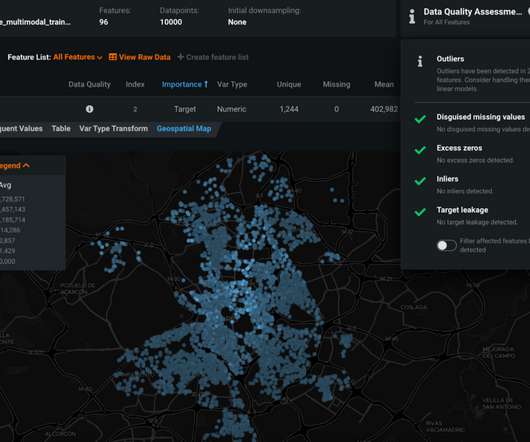Advancing Human-AI Interaction: Exploring Visual Question Answering (VQA) Datasets
Heartbeat
FEBRUARY 2, 2024
Visual Question Answering (VQA) stands at the intersection of computer vision and natural language processing, posing a unique and complex challenge for artificial intelligence. is a significant benchmark dataset in computer vision and natural language processing. or Visual Question Answering version 2.0,












Let's personalize your content